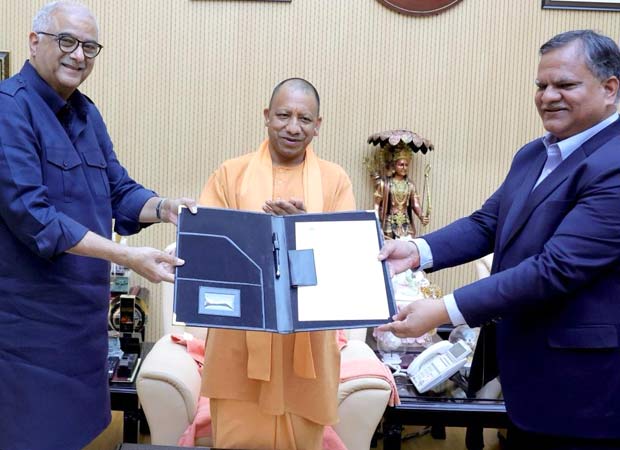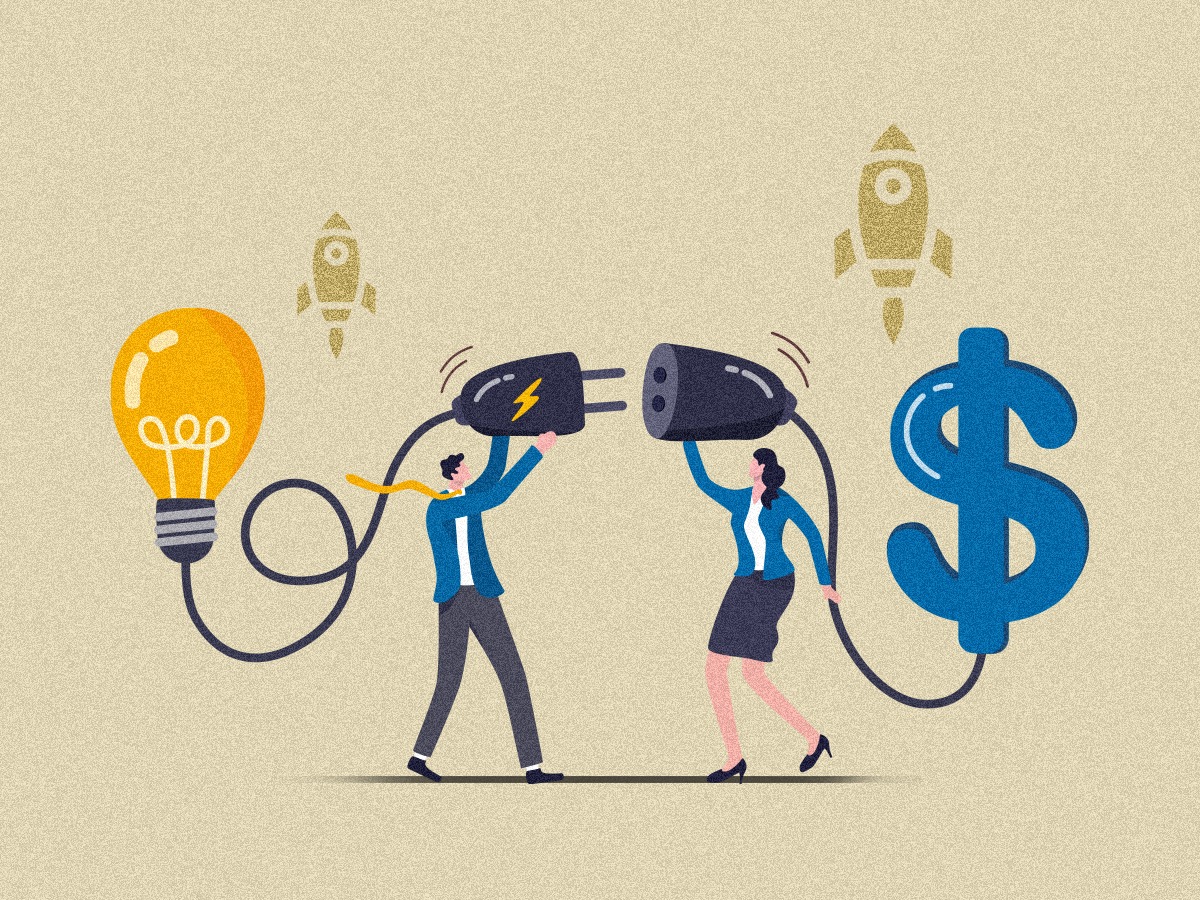Lorem Ipsum has been the industry's standard dummy text ever since the 1500s.

Modern human sacrifices
There are times when all you want is move away from the city bubble and find yourself immersed in splendor. Well for all
- Artificial Intelligence is one of the most revolutionary inventions by human beings. Indian Army and Ministry of Electronics and Information Technology (MeitY) are jointly developing military-grade software that includes Artificial Intelligence-enabled decision-making tools and predictive analytics as well as military grade 5G and 6G.
- In an endeavor to transform parameters of human capabilities and modernize warship, Indian Army is welcoming AI in its various departments.
- Warfare systems such as weapons, sensors, navigation, aviation support, and surveillance can employ AI in order to make operations more efficient and less reliant on human input.
- AI military applications include identifying and neutralizing threats, guiding manned and unmanned aircraft and vehicles, gathering intelligence, and preparing for battle.
- The defence sector uses AI-based technologies for training, surveillance, logistics, cybersecurity, UAV, advanced military weaponry like LAWS, autonomous combat vehicles, and robotics.
- Border monitoring can be enhanced by integrating cameras, radar feeds and sensors.
- These advanced technologies aid in identifying border breaches, categorizing targets, and improving the precision of defence operations:
- Unmanned Aerial Vehicles (UAVs) - Drones outfitted with AI-based aircraft technology are highly proficient in conducting day and night surveillance operations, encompassing border control and comprehensive surveillance.
- Lethal Autonomous Weapon Systems (LAWS) are equipped with integrated sensors and pre-programmed algorithms that assist in identifying, selecting, and tracking hostile targets.
- Autonomous armoured vehicles and robots perform unattended, real-time surveillance, transport injured individuals, and carry supplies under challenging locations, including deserts and mountainous areas. - The Indian Army has taken a significant step towards the future with the greenlighting of development for unmanned autonomous land robots powered by AI.
- Today, the amount of data that is generated, by both humans and machines, far outpaces humans' ability to absorb, interpret, and make complex decisions based on that data. AI is expected to improve industries like healthcare, manufacturing and customer service, leading to higher-quality experiences for both workers and customers.
- Robots demonstrate superior performance in hazardous and high-pressure environments, surpassing the skills of humans.
- Data management - AI can analyze and utilize unutilized or underutilized data, generating more practical and valuable insights for the Indian armed forces. It will improve the capabilities of Intelligence, Surveillance, and Reconnaissance (ISR).
- Pattern recognition - AI can analyze data from many sources and discern patterns.
- Training and simulation encompass a range of disciplines that utilize system and software engineering principles to develop models that aid soldiers in training for various combat systems employed in real-world military missions.
- AI is currently being incorporated into command and control, intelligence, surveillance, logistics, healthcare, information warfare, cyber warfare, training and simulation, autonomous systems, and lethal autonomous weapons.
- The use of AI in the military raises ethical and legal concerns, particularly regarding the level of autonomy that can be granted to AI systems. There is a need to formulate and adopt strict ethical guidelines while ensuring that the implementation of AI does not get unduly delayed due to these considerations, and we fall behind our adversaries
- Artificial Intelligence is one of the most revolutionary inventions by human beings. Indian Army and Ministry of Electronics and Information Technology (MeitY) are jointly developing military-grade software that includes Artificial Intelligence-enabled decision-making tools and predictive analytics as well as military grade 5G and 6G.
- In an endeavor to transform parameters of human capabilities and modernize warship, Indian Army is welcoming AI in its various departments.
- Warfare systems such as weapons, sensors, navigation, aviation support, and surveillance can employ AI in order to make operations more efficient and less reliant on human input.
- AI military applications include identifying and neutralizing threats, guiding manned and unmanned aircraft and vehicles, gathering intelligence, and preparing for battle.
- The defence sector uses AI-based technologies for training, surveillance, logistics, cybersecurity, UAV, advanced military weaponry like LAWS, autonomous combat vehicles, and robotics.
- Border monitoring can be enhanced by integrating cameras, radar feeds and sensors.
- These advanced technologies aid in identifying border breaches, categorizing targets, and improving the precision of defence operations:
- Unmanned Aerial Vehicles (UAVs) - Drones outfitted with AI-based aircraft technology are highly proficient in conducting day and night surveillance operations, encompassing border control and comprehensive surveillance.
- Lethal Autonomous Weapon Systems (LAWS) are equipped with integrated sensors and pre-programmed algorithms that assist in identifying, selecting, and tracking hostile targets.
- Autonomous armoured vehicles and robots perform unattended, real-time surveillance, transport injured individuals, and carry supplies under challenging locations, including deserts and mountainous areas. - The Indian Army has taken a significant step towards the future with the greenlighting of development for unmanned autonomous land robots powered by AI.
- Today, the amount of data that is generated, by both humans and machines, far outpaces humans' ability to absorb, interpret, and make complex decisions based on that data. AI is expected to improve industries like healthcare, manufacturing and customer service, leading to higher-quality experiences for both workers and customers.
- Robots demonstrate superior performance in hazardous and high-pressure environments, surpassing the skills of humans.
- Data management - AI can analyze and utilize unutilized or underutilized data, generating more practical and valuable insights for the Indian armed forces. It will improve the capabilities of Intelligence, Surveillance, and Reconnaissance (ISR).
- Pattern recognition - AI can analyze data from many sources and discern patterns.
- Training and simulation encompass a range of disciplines that utilize system and software engineering principles to develop models that aid soldiers in training for various combat systems employed in real-world military missions.
- AI is currently being incorporated into command and control, intelligence, surveillance, logistics, healthcare, information warfare, cyber warfare, training and simulation, autonomous systems, and lethal autonomous weapons.
- The use of AI in the military raises ethical and legal concerns, particularly regarding the level of autonomy that can be granted to AI systems. There is a need to formulate and adopt strict ethical guidelines while ensuring that the implementation of AI does not get unduly delayed due to these considerations, and we fall behind our adversaries
- Artificial Intelligence is one of the most revolutionary inventions by human beings. Indian Army and Ministry of Electronics and Information Technology (MeitY) are jointly developing military-grade software that includes Artificial Intelligence-enabled decision-making tools and predictive analytics as well as military grade 5G and 6G.
- In an endeavor to transform parameters of human capabilities and modernize warship, Indian Army is welcoming AI in its various departments.
- Warfare systems such as weapons, sensors, navigation, aviation support, and surveillance can employ AI in order to make operations more efficient and less reliant on human input.
- AI military applications include identifying and neutralizing threats, guiding manned and unmanned aircraft and vehicles, gathering intelligence, and preparing for battle.
- The defence sector uses AI-based technologies for training, surveillance, logistics, cybersecurity, UAV, advanced military weaponry like LAWS, autonomous combat vehicles, and robotics.
- Border monitoring can be enhanced by integrating cameras, radar feeds and sensors.
- These advanced technologies aid in identifying border breaches, categorizing targets, and improving the precision of defence operations:
- Unmanned Aerial Vehicles (UAVs) - Drones outfitted with AI-based aircraft technology are highly proficient in conducting day and night surveillance operations, encompassing border control and comprehensive surveillance.
- Lethal Autonomous Weapon Systems (LAWS) are equipped with integrated sensors and pre-programmed algorithms that assist in identifying, selecting, and tracking hostile targets.
- Autonomous armoured vehicles and robots perform unattended, real-time surveillance, transport injured individuals, and carry supplies under challenging locations, including deserts and mountainous areas. - The Indian Army has taken a significant step towards the future with the greenlighting of development for unmanned autonomous land robots powered by AI.
- Today, the amount of data that is generated, by both humans and machines, far outpaces humans' ability to absorb, interpret, and make complex decisions based on that data. AI is expected to improve industries like healthcare, manufacturing and customer service, leading to higher-quality experiences for both workers and customers.
- Robots demonstrate superior performance in hazardous and high-pressure environments, surpassing the skills of humans.
- Data management - AI can analyze and utilize unutilized or underutilized data, generating more practical and valuable insights for the Indian armed forces. It will improve the capabilities of Intelligence, Surveillance, and Reconnaissance (ISR).
- Pattern recognition - AI can analyze data from many sources and discern patterns.
- Training and simulation encompass a range of disciplines that utilize system and software engineering principles to develop models that aid soldiers in training for various combat systems employed in real-world military missions.
- AI is currently being incorporated into command and control, intelligence, surveillance, logistics, healthcare, information warfare, cyber warfare, training and simulation, autonomous systems, and lethal autonomous weapons.
- The use of AI in the military raises ethical and legal concerns, particularly regarding the level of autonomy that can be granted to AI systems. There is a need to formulate and adopt strict ethical guidelines while ensuring that the implementation of AI does not get unduly delayed due to these considerations, and we fall behind our adversaries
- Artificial Intelligence is one of the most revolutionary inventions by human beings. Indian Army and Ministry of Electronics and Information Technology (MeitY) are jointly developing military-grade software that includes Artificial Intelligence-enabled decision-making tools and predictive analytics as well as military grade 5G and 6G.
- In an endeavor to transform parameters of human capabilities and modernize warship, Indian Army is welcoming AI in its various departments.
- Warfare systems such as weapons, sensors, navigation, aviation support, and surveillance can employ AI in order to make operations more efficient and less reliant on human input.
- AI military applications include identifying and neutralizing threats, guiding manned and unmanned aircraft and vehicles, gathering intelligence, and preparing for battle.
- The defence sector uses AI-based technologies for training, surveillance, logistics, cybersecurity, UAV, advanced military weaponry like LAWS, autonomous combat vehicles, and robotics.
- Border monitoring can be enhanced by integrating cameras, radar feeds and sensors.
- These advanced technologies aid in identifying border breaches, categorizing targets, and improving the precision of defence operations:
- Unmanned Aerial Vehicles (UAVs) - Drones outfitted with AI-based aircraft technology are highly proficient in conducting day and night surveillance operations, encompassing border control and comprehensive surveillance.
- Lethal Autonomous Weapon Systems (LAWS) are equipped with integrated sensors and pre-programmed algorithms that assist in identifying, selecting, and tracking hostile targets.
- Autonomous armoured vehicles and robots perform unattended, real-time surveillance, transport injured individuals, and carry supplies under challenging locations, including deserts and mountainous areas. - The Indian Army has taken a significant step towards the future with the greenlighting of development for unmanned autonomous land robots powered by AI.
- Today, the amount of data that is generated, by both humans and machines, far outpaces humans' ability to absorb, interpret, and make complex decisions based on that data. AI is expected to improve industries like healthcare, manufacturing and customer service, leading to higher-quality experiences for both workers and customers.
- Robots demonstrate superior performance in hazardous and high-pressure environments, surpassing the skills of humans.
- Data management - AI can analyze and utilize unutilized or underutilized data, generating more practical and valuable insights for the Indian armed forces. It will improve the capabilities of Intelligence, Surveillance, and Reconnaissance (ISR).
- Pattern recognition - AI can analyze data from many sources and discern patterns.
- Training and simulation encompass a range of disciplines that utilize system and software engineering principles to develop models that aid soldiers in training for various combat systems employed in real-world military missions.
- AI is currently being incorporated into command and control, intelligence, surveillance, logistics, healthcare, information warfare, cyber warfare, training and simulation, autonomous systems, and lethal autonomous weapons.
- The use of AI in the military raises ethical and legal concerns, particularly regarding the level of autonomy that can be granted to AI systems. There is a need to formulate and adopt strict ethical guidelines while ensuring that the implementation of AI does not get unduly delayed due to these considerations, and we fall behind our adversaries
- Artificial Intelligence is one of the most revolutionary inventions by human beings. Indian Army and Ministry of Electronics and Information Technology (MeitY) are jointly developing military-grade software that includes Artificial Intelligence-enabled decision-making tools and predictive analytics as well as military grade 5G and 6G.
- In an endeavor to transform parameters of human capabilities and modernize warship, Indian Army is welcoming AI in its various departments.
- Warfare systems such as weapons, sensors, navigation, aviation support, and surveillance can employ AI in order to make operations more efficient and less reliant on human input.
- AI military applications include identifying and neutralizing threats, guiding manned and unmanned aircraft and vehicles, gathering intelligence, and preparing for battle.
- The defence sector uses AI-based technologies for training, surveillance, logistics, cybersecurity, UAV, advanced military weaponry like LAWS, autonomous combat vehicles, and robotics.
- Border monitoring can be enhanced by integrating cameras, radar feeds and sensors.
- These advanced technologies aid in identifying border breaches, categorizing targets, and improving the precision of defence operations:
- Unmanned Aerial Vehicles (UAVs) - Drones outfitted with AI-based aircraft technology are highly proficient in conducting day and night surveillance operations, encompassing border control and comprehensive surveillance.
- Lethal Autonomous Weapon Systems (LAWS) are equipped with integrated sensors and pre-programmed algorithms that assist in identifying, selecting, and tracking hostile targets.
- Autonomous armoured vehicles and robots perform unattended, real-time surveillance, transport injured individuals, and carry supplies under challenging locations, including deserts and mountainous areas. - The Indian Army has taken a significant step towards the future with the greenlighting of development for unmanned autonomous land robots powered by AI.
- Today, the amount of data that is generated, by both humans and machines, far outpaces humans' ability to absorb, interpret, and make complex decisions based on that data. AI is expected to improve industries like healthcare, manufacturing and customer service, leading to higher-quality experiences for both workers and customers.
- Robots demonstrate superior performance in hazardous and high-pressure environments, surpassing the skills of humans.
- Data management - AI can analyze and utilize unutilized or underutilized data, generating more practical and valuable insights for the Indian armed forces. It will improve the capabilities of Intelligence, Surveillance, and Reconnaissance (ISR).
- Pattern recognition - AI can analyze data from many sources and discern patterns.
- Training and simulation encompass a range of disciplines that utilize system and software engineering principles to develop models that aid soldiers in training for various combat systems employed in real-world military missions.
- AI is currently being incorporated into command and control, intelligence, surveillance, logistics, healthcare, information warfare, cyber warfare, training and simulation, autonomous systems, and lethal autonomous weapons.
- The use of AI in the military raises ethical and legal concerns, particularly regarding the level of autonomy that can be granted to AI systems. There is a need to formulate and adopt strict ethical guidelines while ensuring that the implementation of AI does not get unduly delayed due to these considerations, and we fall behind our adversaries
- Artificial Intelligence is one of the most revolutionary inventions by human beings. Indian Army and Ministry of Electronics and Information Technology (MeitY) are jointly developing military-grade software that includes Artificial Intelligence-enabled decision-making tools and predictive analytics as well as military grade 5G and 6G.
- In an endeavor to transform parameters of human capabilities and modernize warship, Indian Army is welcoming AI in its various departments.
- Warfare systems such as weapons, sensors, navigation, aviation support, and surveillance can employ AI in order to make operations more efficient and less reliant on human input.
- AI military applications include identifying and neutralizing threats, guiding manned and unmanned aircraft and vehicles, gathering intelligence, and preparing for battle.
- The defence sector uses AI-based technologies for training, surveillance, logistics, cybersecurity, UAV, advanced military weaponry like LAWS, autonomous combat vehicles, and robotics.
- Border monitoring can be enhanced by integrating cameras, radar feeds and sensors.
- These advanced technologies aid in identifying border breaches, categorizing targets, and improving the precision of defence operations:
- Unmanned Aerial Vehicles (UAVs) - Drones outfitted with AI-based aircraft technology are highly proficient in conducting day and night surveillance operations, encompassing border control and comprehensive surveillance.
- Lethal Autonomous Weapon Systems (LAWS) are equipped with integrated sensors and pre-programmed algorithms that assist in identifying, selecting, and tracking hostile targets.
- Autonomous armoured vehicles and robots perform unattended, real-time surveillance, transport injured individuals, and carry supplies under challenging locations, including deserts and mountainous areas. - The Indian Army has taken a significant step towards the future with the greenlighting of development for unmanned autonomous land robots powered by AI.
- Today, the amount of data that is generated, by both humans and machines, far outpaces humans' ability to absorb, interpret, and make complex decisions based on that data. AI is expected to improve industries like healthcare, manufacturing and customer service, leading to higher-quality experiences for both workers and customers.
- Robots demonstrate superior performance in hazardous and high-pressure environments, surpassing the skills of humans.
- Data management - AI can analyze and utilize unutilized or underutilized data, generating more practical and valuable insights for the Indian armed forces. It will improve the capabilities of Intelligence, Surveillance, and Reconnaissance (ISR).
- Pattern recognition - AI can analyze data from many sources and discern patterns.
- Training and simulation encompass a range of disciplines that utilize system and software engineering principles to develop models that aid soldiers in training for various combat systems employed in real-world military missions.
- AI is currently being incorporated into command and control, intelligence, surveillance, logistics, healthcare, information warfare, cyber warfare, training and simulation, autonomous systems, and lethal autonomous weapons.
- The use of AI in the military raises ethical and legal concerns, particularly regarding the level of autonomy that can be granted to AI systems. There is a need to formulate and adopt strict ethical guidelines while ensuring that the implementation of AI does not get unduly delayed due to these considerations, and we fall behind our adversaries
Artificial Intelligence (AI) is helping in technical innovation in Indian Army. Rajnath Singh, Minister of Defence, launched 75 newly developed AI technologies during the first ever ‘AI in Defence’ symposium.
Indian Army ramps up AI:
AI manned border :
Future: Humans outperformed :
Editor’s Note:
AI is creating its own space in several industries which will eventually lead to a worldwide revolution. These robots, capable of both offensive and defensive roles, is about to revolutionize the Indian military landscape too. Despite being handicapped with increased regulation, data privacy concerns and job losses, worldwide expenditure on AI is expected to exceed USD 300 billion by 2026.
Keywords:
#indianarmy #artificialintelligence #defenceminister #robot
Artificial Intelligence (AI) is helping in technical innovation in Indian Army. Rajnath Singh, Minister of Defence, launched 75 newly developed AI technologies during the first ever ‘AI in Defence’ symposium.
Indian Army ramps up AI:
AI manned border :
Future: Humans outperformed :
Editor’s Note:
AI is creating its own space in several industries which will eventually lead to a worldwide revolution. These robots, capable of both offensive and defensive roles, is about to revolutionize the Indian military landscape too. Despite being handicapped with increased regulation, data privacy concerns and job losses, worldwide expenditure on AI is expected to exceed USD 300 billion by 2026.
Keywords:
#indianarmy #artificialintelligence #defenceminister #robot
Artificial Intelligence (AI) is helping in technical innovation in Indian Army. Rajnath Singh, Minister of Defence, launched 75 newly developed AI technologies during the first ever ‘AI in Defence’ symposium.
Indian Army ramps up AI:
AI manned border :
Future: Humans outperformed :
Editor’s Note:
AI is creating its own space in several industries which will eventually lead to a worldwide revolution. These robots, capable of both offensive and defensive roles, is about to revolutionize the Indian military landscape too. Despite being handicapped with increased regulation, data privacy concerns and job losses, worldwide expenditure on AI is expected to exceed USD 300 billion by 2026.
Keywords:
#indianarmy #artificialintelligence #defenceminister #robot
Artificial Intelligence (AI) is helping in technical innovation in Indian Army. Rajnath Singh, Minister of Defence, launched 75 newly developed AI technologies during the first ever ‘AI in Defence’ symposium.
Indian Army ramps up AI:
AI manned border :
Future: Humans outperformed :
Editor’s Note:
AI is creating its own space in several industries which will eventually lead to a worldwide revolution. These robots, capable of both offensive and defensive roles, is about to revolutionize the Indian military landscape too. Despite being handicapped with increased regulation, data privacy concerns and job losses, worldwide expenditure on AI is expected to exceed USD 300 billion by 2026.
Keywords:
#indianarmy #artificialintelligence #defenceminister #robot
Artificial Intelligence (AI) is helping in technical innovation in Indian Army. Rajnath Singh, Minister of Defence, launched 75 newly developed AI technologies during the first ever ‘AI in Defence’ symposium.
Indian Army ramps up AI:
AI manned border :
Future: Humans outperformed :
Editor’s Note:
AI is creating its own space in several industries which will eventually lead to a worldwide revolution. These robots, capable of both offensive and defensive roles, is about to revolutionize the Indian military landscape too. Despite being handicapped with increased regulation, data privacy concerns and job losses, worldwide expenditure on AI is expected to exceed USD 300 billion by 2026.
Keywords:
#indianarmy #artificialintelligence #defenceminister #robot
Artificial Intelligence (AI) is helping in technical innovation in Indian Army. Rajnath Singh, Minister of Defence, launched 75 newly developed AI technologies during the first ever ‘AI in Defence’ symposium.
Indian Army ramps up AI:
AI manned border :
Future: Humans outperformed :
Editor’s Note:
AI is creating its own space in several industries which will eventually lead to a worldwide revolution. These robots, capable of both offensive and defensive roles, is about to revolutionize the Indian military landscape too. Despite being handicapped with increased regulation, data privacy concerns and job losses, worldwide expenditure on AI is expected to exceed USD 300 billion by 2026.
Keywords:
#indianarmy #artificialintelligence #defenceminister #robot









West Bengal
Violence ensues post panchayati
00:37 Read

more
Kerala
I see red, red... oh red!
00:30 Read

more
Delhi
Can we please pause politics now?
00:38 Read

more
Karnataka
IAS : Public or Politician "servants"
00:52 Read

more
Maharashtra
Cash games : the need for more money
00:41 Read

more
Manipur
Your internet, your problem.
00:33 Read

more
Tamil Nadu
Slowly cooking to extract truth justice
00:44 Read

more
Janmu and Kashmir
Protection of country or abuse of power?
00:45 Read

more



The Burning Train : part 2?
00:32 Read

more
The battle against drugs for brighter future
00:49 Read

more
A breath of fresh air or fad
00:33 Read

more
When danger looms at the doorsteps
00:39 Read

more
A new wave in Indian Politics
00:34 Read

more
A curse disguised as a blessing?
00:37 Read

more
The strengthening of friendships
00:37 Read

more
Have the sleepless nights come early?
00:42 Read

more

BROADCAST CHANNELS
DAILY NEWS PORTALS
Copyright © 2025 All Rights Reserved by TRUEE.NEWS is a copyright property of Independent Media Corp




























































































































































